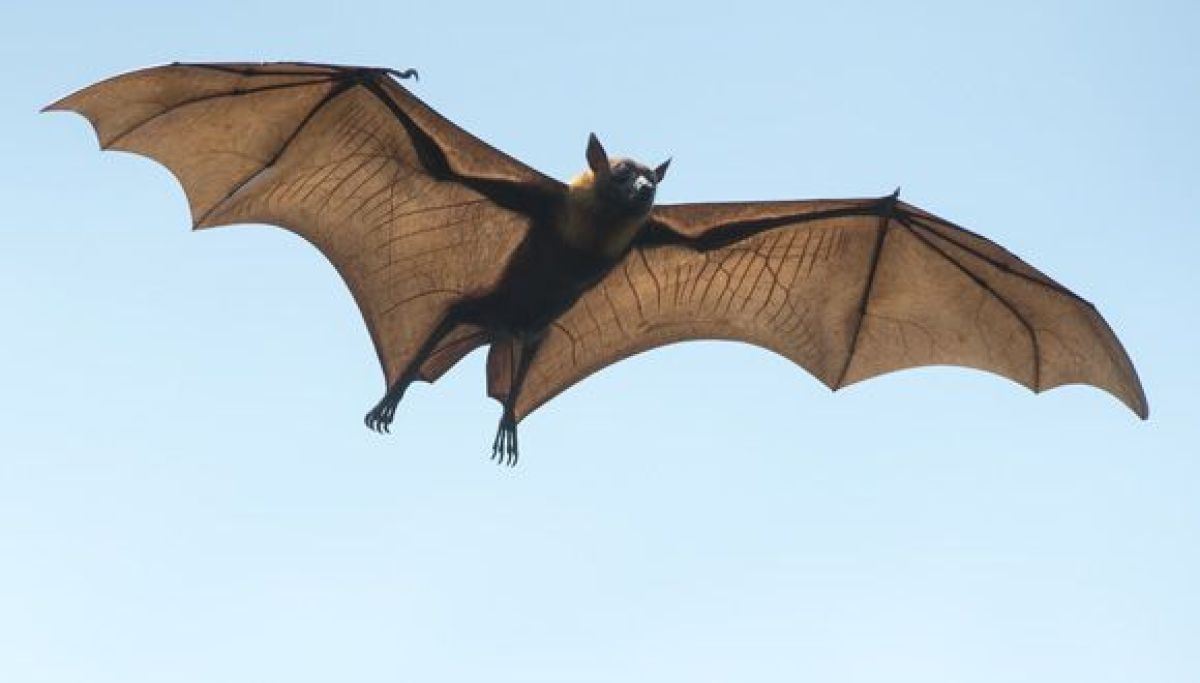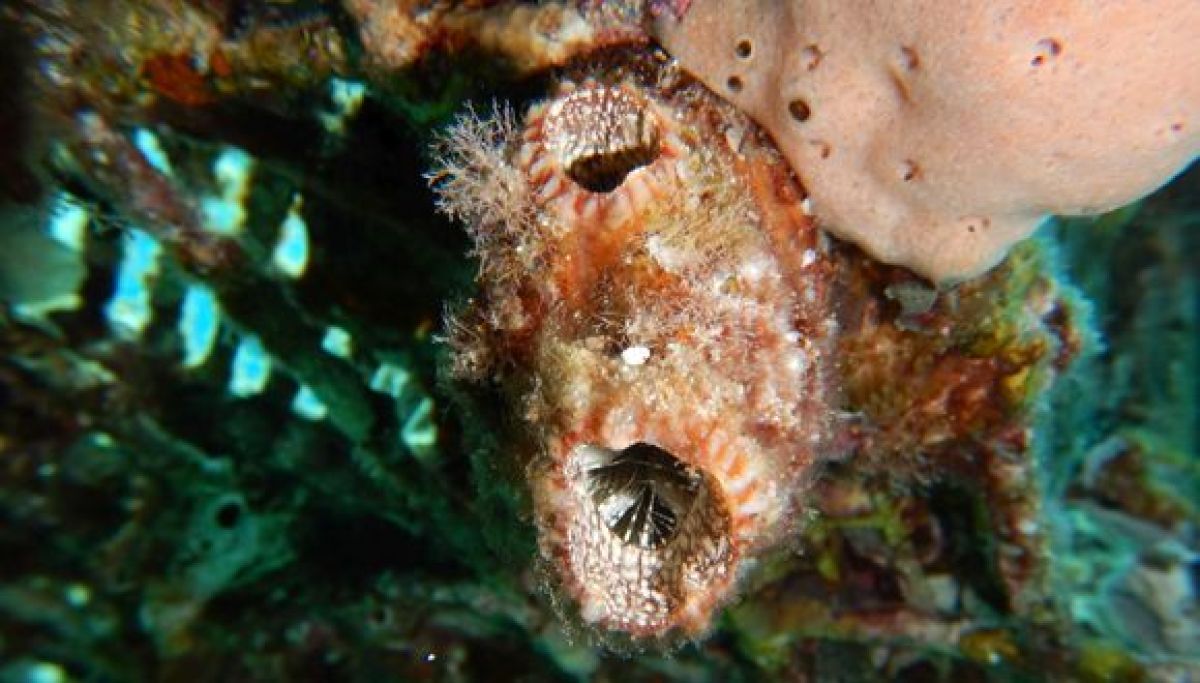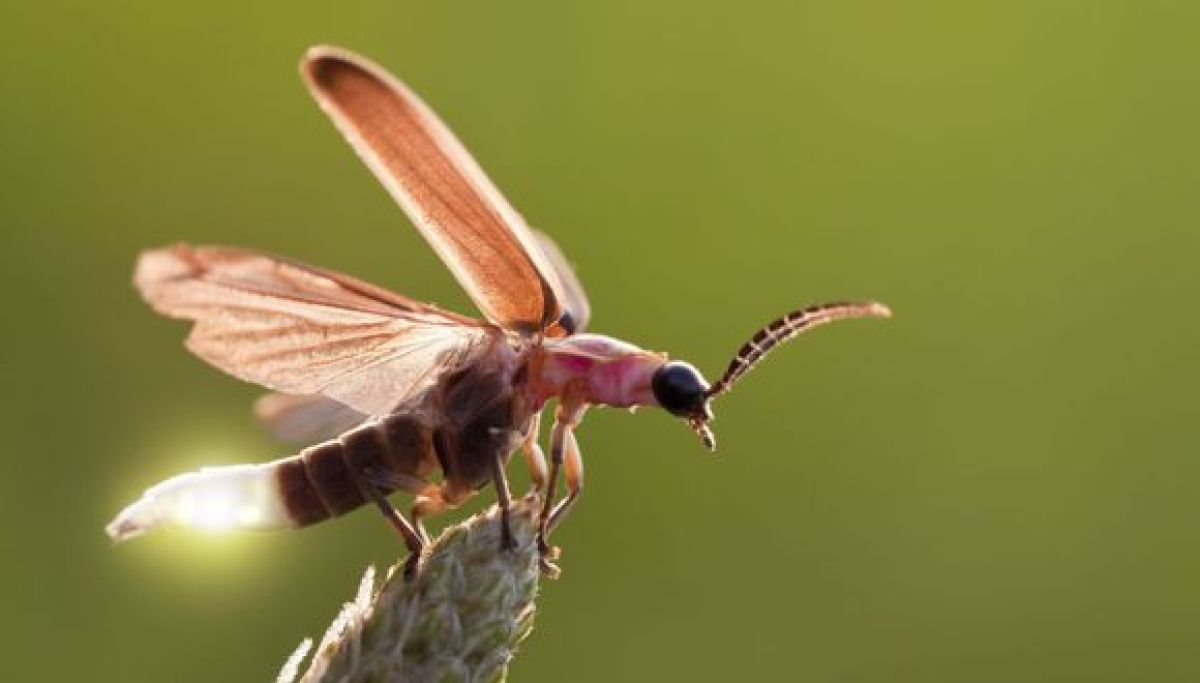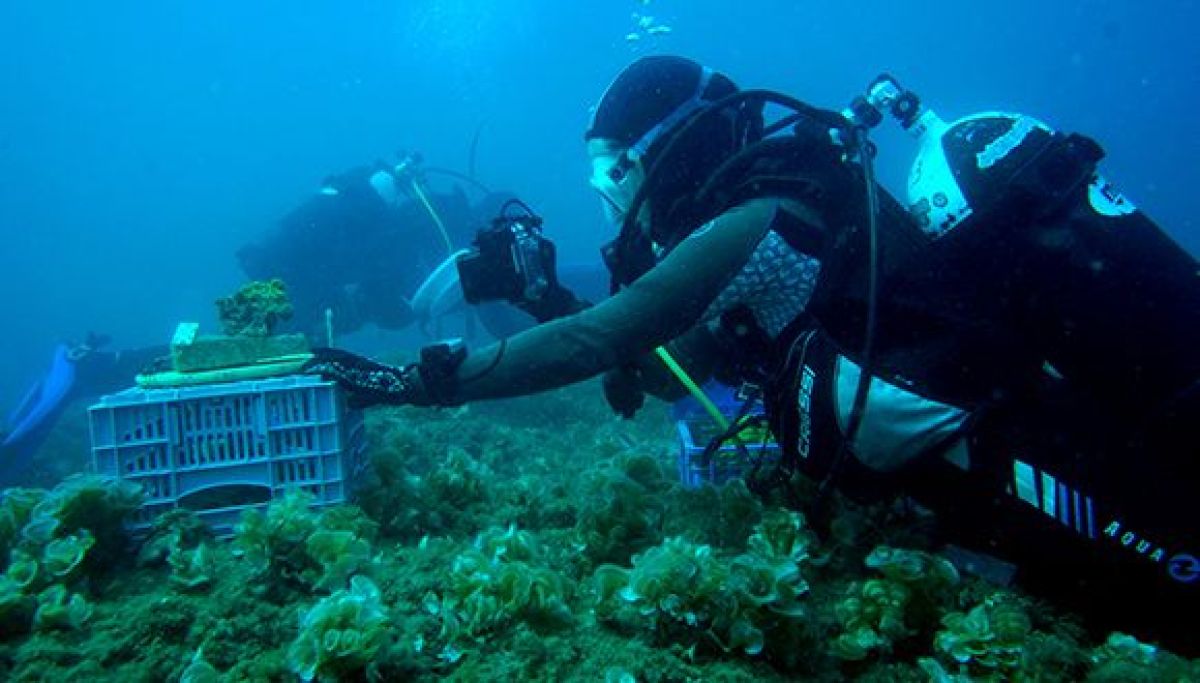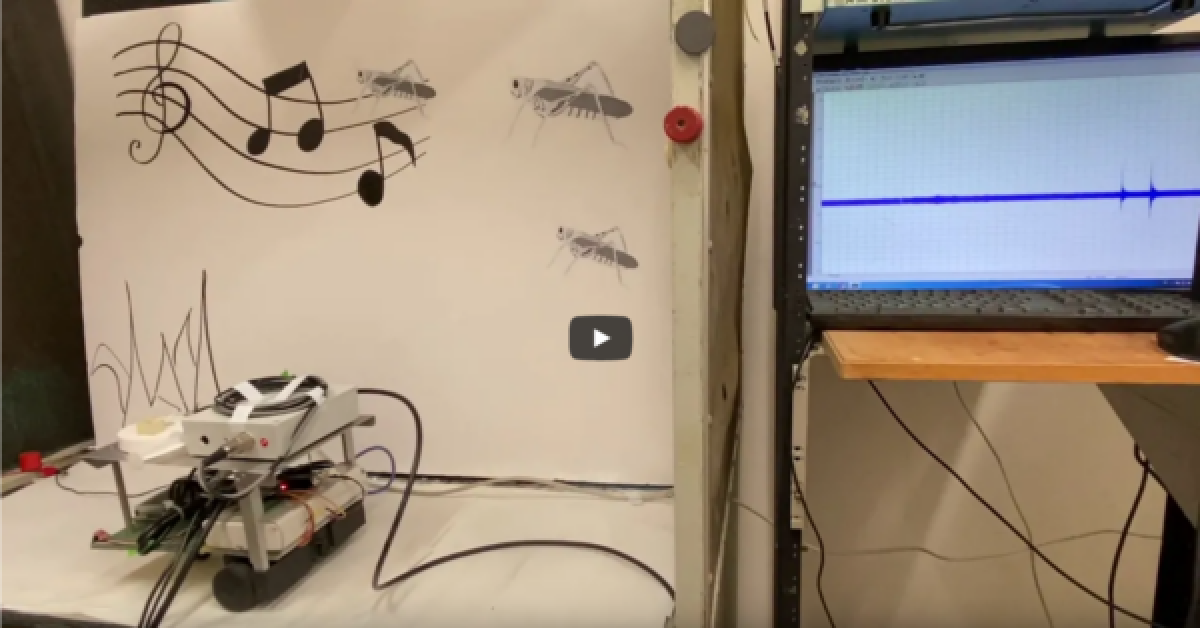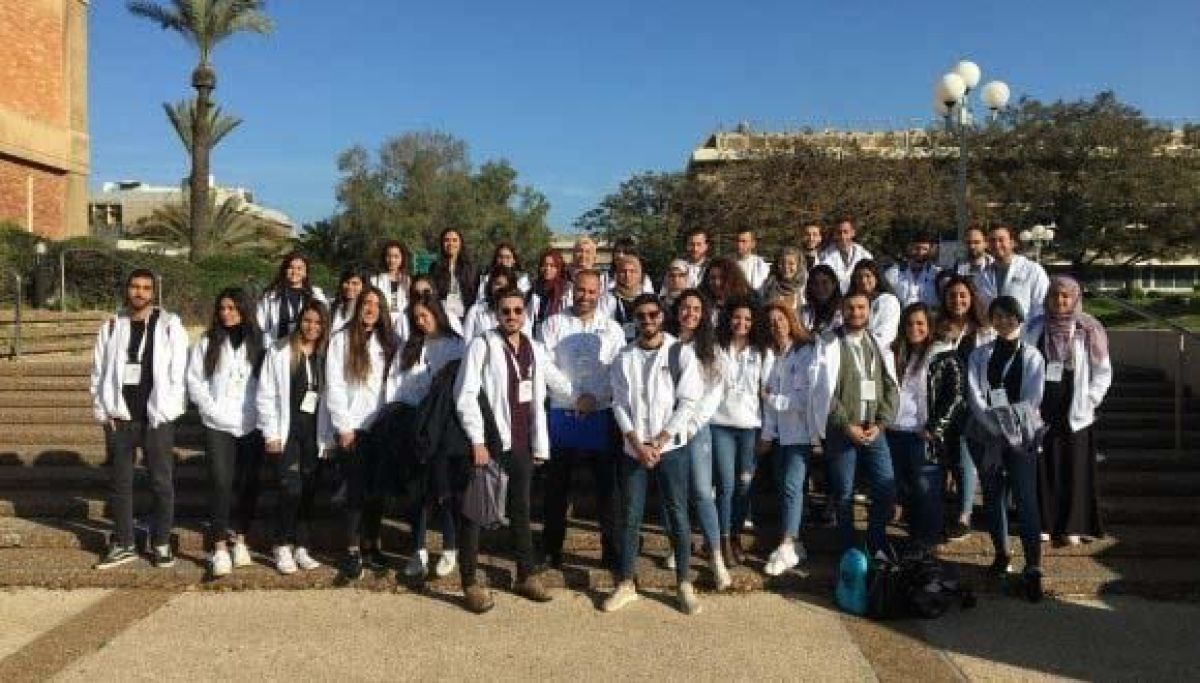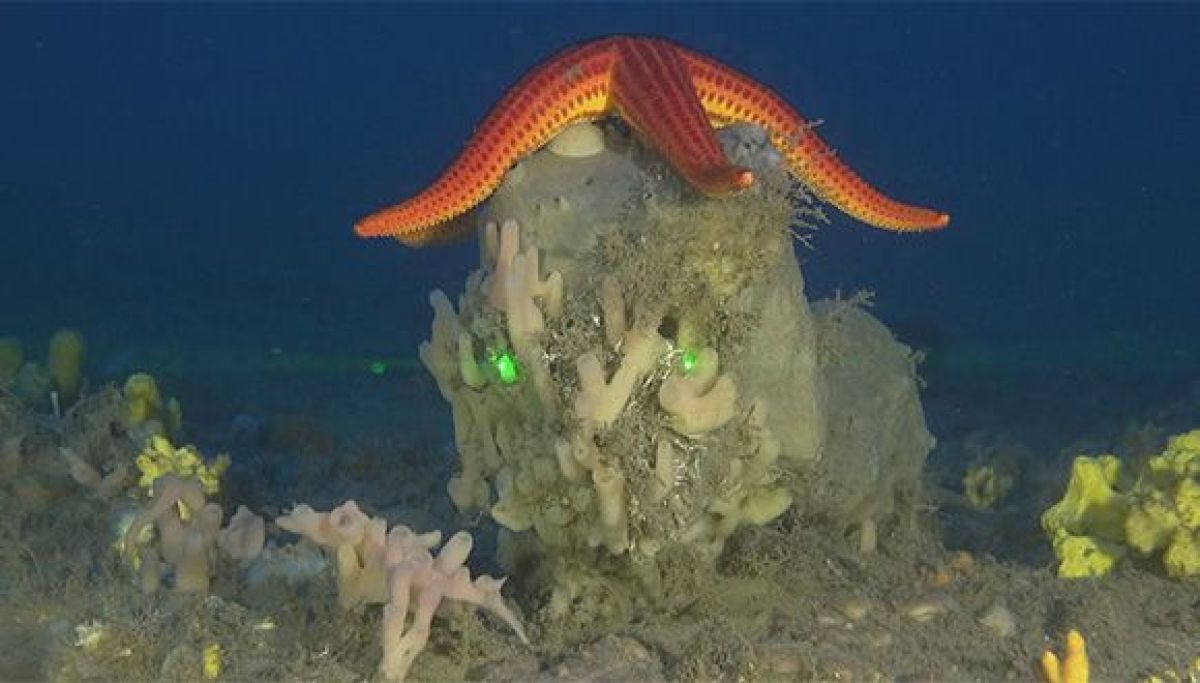Tag: Earth Sciences
When One Becomes Three
Extraordinary discovery in the Gulf of Eilat: Animal able to regenerate all its organs fully after dissection.
Regenerates all its Organs
Prof. Noa Shenkar: “Since the dawn of humanity, humans have been fascinated by the ability to regenerate damaged or missing organs. Regeneration is a wonderful ability that we have, to a very limited extent, and we would like to understand how it works in order to try and apply it within our own bodies. Anyone snorkeling in the Gulf of Eilat can find this intriguing ascidian, who may be able to help us comprehend processes of tissue renewal that can help the human race.” “It is an astounding discovery, as this is an animal that belongs to the Phylum Chordata – animals with a dorsal cord – which also includes us humans,” continues Prof. Shenkar. “The ability to regenerate organs is common in the animal kingdom, and even among chordates you can find animals that regenerate organs, like the gecko who is able to grow a new tail. But not entire body systems. Here we found a chordate that can regenerate all of its organs even if it is separated into three pieces, with each piece knowing exactly how to regain functioning of all its missing body systems within a short period of time.” There are hundreds of species of ascidians, and they are found in all of the world’s oceans and seas. Anyone who has ever opened their eyes underwater has seen ascidians without knowing it, as they often camouflage themselves as lumps on rocks and are therefore difficult to discern. The animal that is the subject of this new study is an ascidian from the species Polycarpa mytiligera, which is very common in the coral reefs of Eilat. Anyone snorkeling in the Gulf of Eilat can find this intriguing ascidian.Completing the Missing Parts
“By all accounts, the ascidian is a simple organism, with two openings in its body: an entry and an exit,” says Tal Gordon, whose doctoral dissertation included this new research. “Inside the body there is a central organ that resembles a pasta strainer. The ascidian sucks in water through the body’s entry point, the strainer filters the food particles that remain in the body, and the clean water exits through the exit point. Among invertebrates, they are considered to be the closest to humans from an evolutionary point of view.” Ascidians are famous for their regenerative ability, but until now these abilities have been identified mainly in asexual reproduction. Never before has such a high regenerative capacity been detected in a chordate animal that reproduces only by sexual reproduction. “There are species of ascidians that perform simple regeneration in order to reproduce,” Gordon says. “These are species with a colonial lifestyle, with many identical individuals connected to one another. They replicate themselves in order to grow. In contrast, the ascidian from Eilat, Polycarpa mytiligera, is an organism with a solitary lifestyle, without the capacity for asexual reproduction, similar to humans. In previous studies we showed that this species is able to regenerate its digestive system and its points of entrance and exit within a few days. But then we wanted to see if it is capable of renewing all of its body systems. We took a few individual ascidians from Eilat and dissected them into two parts, which were able to replenish the removed sections without any problem. In a subsequent experiment, we dissected several dozen ascidians into three fragments, leaving a part of the body without a nerve center, heart, and part of the digestive system. And contrary to our expectations, not only did each part survive the dissection on its own, all of the organs were regenerated in each of the three sections. Instead of one ascidian, there were now three. This is very astonishing. Never before has such regenerative capacity been discovered among a solitary species that reproduces sexually, anywhere in the world.”Our Planet in the Hands of Academia
TAU to launch a multidisciplinary research center on climate change with the aim of finding practical solutions to the global crisis.
“The time has come to find solutions”
Prof. Ariel Porat, President of Tel Aviv University: “Tel Aviv University is a partner in the need for all humankind to deal with the dangers of global warming and climate change. Confronting this challenge requires a view from many perspectives: technological, social, moral, economic, sociological, legal and more. The huge variety of disciplines at Tel Aviv University allows for such a broad view. This new multidisciplinary center that will deal with climate change joins the several multidisciplinary centers we have established in the last two years at the university, including the Center for Artificial Intelligence and Data Science, the Center for Combating Pandemics, and the Center for Quantum Science and Technology.” The center will be headed by Prof. Colin Price, Head of the university’s Department of Environmental Studies, who explains that “Basic research is important, but since we already know that there is a problem with global warming, and we know what causes the problem, the time has come to find solutions, from every perspective and every discipline. There are technological solutions that will come from engineering and the exact sciences, but there are also solutions that will come from regulation, public policy, and even psychology. After all, you don’t need modern technology to mobilize public support for action, and without this support, technological solutions will not be implemented. The Center for Climate Change Action will be a cross-campus collaboration, with partners in high-tech, industry, government and civil society.” According to Prof. Price, the main goal of the research center, and of humanity in general, is to first and foremost address the source of the problem, namely the greenhouse gases that humans emit into the atmosphere, and to meet the target of net zero greenhouse gas emissions by 2050, as defined by the UN. “We have a total of 30 years to find solutions and reach a global balance, and there are still a lot of problems to solve,” adds Prof. Price. ”A good example of this is solar energy. It’s cheaper to generate electricity from solar energy today than from a power plant that uses fuel, coal or even natural gas, but the solar energy must be transported to people’s homes, the electricity generated must be stored at night, that is, in batteries, and you need infrastructure to carry the energy to population centers. We need to invest in finding practical solutions today, in order to avoid the gloomy forecasts of tomorrow.” Prof. Colin Price: “We have a total of 30 years to find solutions and reach a global balance, and there are still a lot of problems to solve.”Fireflies’ Protective ‘Musical Armor’ Against Bats
Trailblazing TAU study reveals that fireflies produce strong ultrasonic sounds that may potentially work to deter bats.
They sure know how to put on a show at nights – fireflies are striking with their glow-in-the-dark feature. But have you ever stopped and wondered how these glowing insects defend themselves against predators? A trailblazing TAU study reveals that fireflies produce strong ultrasonic sounds that may potentially work to deter bats, serving as a ‘musical armor’ against these predators. The discovery of such a ‘musical battle’ between fireflies and bats may pave the way for further research, and the discovery of a new defense mechanism developed by animals against their predators. According to the study, the fireflies produce strong ultrasonic sounds – soundwaves that the human ear, and more importantly the fireflies themselves, cannot detect. The researchers hypothesize that these sounds are, in fact, meant for the ears of the bats, keeping them away from the poisonous fireflies, and thereby serving as a kind of ‘musical armor’. The study was led by Prof. Yossi Yovel, Head of the Sagol School of Neuroscience, and a member of the School of Mechanical Engineering and the School of Zoology at the George S. Wise Faculty of Life Sciences. It was conducted in collaboration with the Vietnam Academy of Science and Technology (VAST) and has been published in iScience. Fireflies are known for their unique, all-year glow, which is effective as a mating signal. Their bodies contain poison, and so the light flashes probably also serve as an aposematic signal, a warning to potential predators. At the same time, this signal is also the firefly’s weakness, as it makes it an easy target for predators. Bats are among the fireflies’ most prevalent potential predators, and some bats have poor vision, rendering the flashing signal ineffective. This prompted the researchers to check whether fireflies were equipped with an additional layer of protection against bats.Accidental Discovery of ‘Musical Battle’
The idea for this study came up accidentally, during a study that tracked bats’ echolocation. Ksenia Krivoruchku, the PhD student who led the study recalls, “We were wandering around a tropical forest with microphones capable of recording bats’ high frequencies, when suddenly, we detected unfamiliar sounds at similar frequencies, coming from fireflies. “In-depth research, using high-speed video, revealed that the fireflies produce the sound by moving their wings, and that the fireflies themselves are incapable of hearing this frequency. Consequently, we hypothesized that the sound is not intended for internal communication within the species.” Following this discovery, the team at Prof. Yovel’s laboratory examined three different species of fireflies that are common in Vietnam (Curtos, Luciola and Sclerotia), in addition to one Israeli species (Lampyroidea). It was found that they all produce these unique ultrasonic sounds, and that they are all unable hear them. Prof. Yovel says that it is premature to conclude that fireflies have developed a special defense mechanism specifically targeting bats, there are indications that this may be the case. The fact that the fireflies themselves are unable to hear the sound, while bats can both hear it and use it to detect the fireflies, makes it more likely that these ultrasonic sounds serve as a warning signal. The discovery of ultrasonic sounds in fireflies is in itself an important contribution to the study of predator-prey relations. The idea of warning signals that the sender itself cannot detect is known from the world of plants, but is quite rare among animals. Krivoruochku says “Our discovery of the ‘musical battle’ between fireflies and bats may pave the way for further research, and possibly the discovery of a new defense mechanism developed by animals against potential predators.”Promoting Equality on Campus
Striving for a Diverse & Equal Campus
Tel Aviv University has thus adopted in practice the recommendations of the Diversity Committee appointed by Prof. Ariel Porat, President of TAU, to examine the issue. The Committee, headed by Prof. Sigal Alon, recommended, inter alia, that the new unit outline a comprehensive university policy, set goals, and help senior TAU office holders promote equality and diversity in the areas under their responsibility. The Committee report states: “To solve complex social problems, discover the next scientific breakthrough, and reach new heights of artistic expression, we must allow diverse ideas, approaches, perspectives, and experiences. Such diversity stimulates new research POVs, analytical methods, discoveries, and solutions.” Similarly, campus diversity creates opportunities for interactions among students and faculty members coming from different backgrounds and expands tolerance towards a broad range of perspectives. A diverse campus is itself an edifying model as it prepares students for better citizenship and leadership in a democracy striving for an ideal society free of racism, fear of the other, and stereotyping. TAU President Prof. Ariel Porat: “To strive for equality and diversity on the campus is not only a social objective of the highest importance. A diverse academic faculty ensures a higher academic level for the university and its units; a diverse student body makes the experience of studying at the campus more meaningful; and a diverse administration provides the campus community with the sense that the university belongs to everyone regardless of gender, ethnicity, or nationality. I’m proud that Prof. Neta Ziv responded favorably to my request to assume the position of establishing the new Commission. Anyone who knows Neta knows that she is both a fully ethical individual and someone who gets things done, a rare combination of traits. For many years, she headed the Law Faculty’s legal clinics and made them a source of pride for the Faculty and University as a whole, nationally and internationally.” Prof. Neta Ziv notes that the Commission she will lead will operate jointly with existing units to expand programs that have been implemented in recent years, particularly for first-generation university students and students with disabilities, the integration of Arabs and other groups in the administrative staff, and increasing the number of women and Arabs on the academic faculty at all levels. Prof. Ziv: “I’m greatly honored to have been asked to head the formation of the new unit and work on issues I have studied, taught, and been active in for more than thirty years. I believe that a diverse, equal campus is critical for achieving the academic excellence we strive for. But this is also an ethical matter. As a body that relies on public and community resources, the University is obligated to reflect the diversity of the Israeli public at large and become a sphere where every group enjoys a sense of belonging in an equal and respectful manner.”An Underwater Salute to Grandma Vera
Marine biologist names new species of sponge after Holocaust survivor grandmother, turning 95.
There are many ways to make a beloved grandmother feel special on her birthday, and Tal Idan, a doctoral student in Prof. Micha Ilan’s sponge lab at TAU’s School of Zoology, did something quite unconventional: She scientifically named a new sponge that she herself discovered, after her grandmother, Vera. And as Israel is observing the national Holocaust Remembrance Day (Yom HaShoa), Tal found her own way of eternalizing her grandmother’s identity as a courageous Holocaust survivor.Finding a Needle in a Haystack
The process leading up to the naming of a new species of animals is complex and lengthy, and the naming is considered the icing on the cake. Tal Idan researches sponges on the Israeli coast of the Mediterranean. Detecting and identifying new species for science is part of her research. “One of the benefits of working in deep waters and in new environments, is that there will always be new species – simply because these places have not yet been reached by anyone,” she explains. “There are a number of sponges that we have not yet been able to identify. These three, however, we discovered back in 2018, and since then we have been working to identify them.” Vera the Sponge
Tal explains that this is a lengthy and intricate part. “Animal characterization is usually done by examining the genetic differences in the animals’ DNA. This won’t work with sponges, that have a really good DNA-repairing ability and their differences are not that big. One literally needs to characterize the structure of their body: “The skeleton of the sponges consists of skeletal needles in very beautiful shapes. You have to check the structure of the needles, measure and compare these to those of the other species that exist in the same genus. It took several years to produce good enough characterizations.”
Vera the Sponge
Tal explains that this is a lengthy and intricate part. “Animal characterization is usually done by examining the genetic differences in the animals’ DNA. This won’t work with sponges, that have a really good DNA-repairing ability and their differences are not that big. One literally needs to characterize the structure of their body: “The skeleton of the sponges consists of skeletal needles in very beautiful shapes. You have to check the structure of the needles, measure and compare these to those of the other species that exist in the same genus. It took several years to produce good enough characterizations.”
Grandma Vera’s Love for the Sea
Like Tal, Vera loves the sea very much. Throughout many years, Vera and her late husband, Otto, used to swim in the sea in all weathers. Otto was Vera’s childhood sweetheart from the Czech Republic, who survived the Holocaust with her and immigrated with her to Israel. Even after his death and up until very recently, Vera would continue to go to the sea alone. Tal and Vera, photographed during a trip in celebration of Vera’s 90th birthday
Tal and Vera, photographed during a trip in celebration of Vera’s 90th birthday
So far, Tal has successfully defined three new species for science. After consulting with her research colleagues, they decided that one of the sponges would be called Hemiasterella verai , named after grandma Vera. Tal explains that when a new species is named, it is common practice to include the origin of the name. Thus she was able to memorialize not only her dear grandmother’s name, but also the fact that she courageously survived the Holocaust. Tal says that it was important for her to do this for Vera while she is alive, and also to include this important fact.
Today, grandma Vera has three sons, seven grandchildren and 11 great-grandchildren, who all plan to attend her upcoming 95th birthday celebration. She always says they are her biggest victory over the Nazis.
Featured image: Tal Idan in the depths of the Mediterranean
Struggling in a Toxic Workplace?
TAU researchers hope to save farmers from snakebites in their fields.
Did you know that about 1.8 million instances of snakebite envenoming occur around the world annually, killing about 94,000 people? Snakebite envenoming is a potentially life-threatening disease that typically results from the injection of a mixture of different toxins (“venom”) following the bite of a venomous snake. In some areas, snakebites are considered a major cause of death, especially among farmers who encounter snakes in their fields. The World Health Organization has even launched a strategic plan to reduce snakebites by 50% by 2030. TAU researchers, as part of an international research group, created an innovative simulation model for predicting snakebites, based on an improved understanding of interactions between farmers and snakes.Mapping Snakebites
The purpose of the model is to determine the probability of a snakebites occurring in certain places (i.e. in rice fields vs. tea fields) at various times (hours of the day and months of the year). The study is founded upon extensive research and data from Sri Lanka, where about 30,000 envenoming snakebites kill roughly 400 people every year. It focused on 6 types of snakes – Cobra, Russell’s viper, Saw-scaled viper, Hump-nosed viper, Common krait and Ceylon krait – and the farmers who grow the 3 most common crops in the area: rice, tea and rubber. The model predicts that the bites of Russell’s viper, one of the world’s most dangerous snakes, peak in rice fields during February and August, while the less lethal hump-nosed viper prefers rubber plantations in April and May. It was also found that in the southeastern part of the studied region, the largest number of snakebites are inflicted by Russell’s viper, while in other parts of the region snakebites of the hump-nosed viper are the most common.Interdisciplinary Model
Eyal Goldstein of the TAU School of Zoology explains: “We built a first-of-its-kind interdisciplinary model, which includes the behavior patterns of both sides – snakes and humans, identifying risk factors at various times and places and warning against them. The model can for instance differentiate between low-risk and high-risk areas – a difference which can be manifested in double the number of snakebites per 100,000 people.” Eyal Goldstein
Dr. Kris Murray of Imperial College London and the School of Hygiene and Tropical Medicine in London explains that “Snakes and humans both go about their business at different times of the day, during different seasons and in different types of habitats. Our model factors in all these elements to predict encounters between humans and snakes in areas where farmers are working. We consider the degree of aggressiveness of different snake species when we calculate how likely an encounter is to result in a bite.”
Dr. Takuya Iwamura (currently at Oregon State University) emphasizes that “Our approach is to mathematically analyze interactions between snakes and humans, with an emphasis on the ecological perspective. This is a completely new approach to understanding the mechanism behind snakebites. Unlike most studies, which have so far focused mainly on social and economic risk factors, we chose to focus on the ecological aspects – such as snakes’ movements and habitats, the impact of climate and rainfall, and the respective behaviors of farmers and snakes – as a key to predicting potential encounters.”
Eyal Goldstein
Dr. Kris Murray of Imperial College London and the School of Hygiene and Tropical Medicine in London explains that “Snakes and humans both go about their business at different times of the day, during different seasons and in different types of habitats. Our model factors in all these elements to predict encounters between humans and snakes in areas where farmers are working. We consider the degree of aggressiveness of different snake species when we calculate how likely an encounter is to result in a bite.”
Dr. Takuya Iwamura (currently at Oregon State University) emphasizes that “Our approach is to mathematically analyze interactions between snakes and humans, with an emphasis on the ecological perspective. This is a completely new approach to understanding the mechanism behind snakebites. Unlike most studies, which have so far focused mainly on social and economic risk factors, we chose to focus on the ecological aspects – such as snakes’ movements and habitats, the impact of climate and rainfall, and the respective behaviors of farmers and snakes – as a key to predicting potential encounters.”
Scalable Model
About 1.8 million envenoming snakebites occur around the world annually, killing about 94,000 people. In tropical areas, especially in Southeast Asia and Sub-Saharan Africa, snakebites are considered a major cause of death, especially among farmers who encounter snakes in their fields. In response, the World Health Organization has launched a strategic plan to reduce snakebites by 50% by 2030. An important basis for attaining this goal is expanding relevant scientific research. Verified against existing data in Sri Lanka, the model was proved very accurate in predicting snakebite patterns in different areas and different seasons, as well as the relative contribution of various types of snakes to the overall picture as documented in hospital data. The researchers plan to implement the model in places that do not yet keep accurate snakebite data. They will also use it to predict future changes resulting from climate change – such as increased rainfall leading to greater snake activity, as well as changes in land use and habitats available to snakes. Dr. Iwamura concludes: “Our model can help focus the efforts of snakebite reduction policies, and serve as a tool for warning, raising awareness and saving human lives. We regard this study as a first stage in a broader project, and plan to develop more complex models of encounters between humans and wildlife, to support both public health and nature preservation policies in the real world.”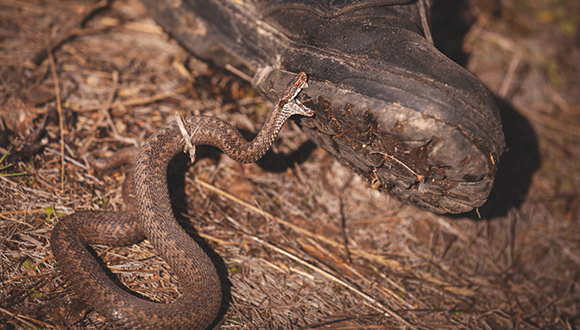 Farmer and snake – better off apart
The study was led by Dr. Takuya Iwamura (currently at Oregon State University), Eyal Goldstein of the TAU School of Zoology, and Dr. Kris Murray of Imperial College London and the School of Hygiene and Tropical Medicine in London. Other participants included researchers from the Liverpool School of Tropical Medicine, Lancaster University and the University of Kelaniya, Sri Lanka. The paper was published in February 2021 in PLOS Neglected Tropical Diseases.
Farmer and snake – better off apart
The study was led by Dr. Takuya Iwamura (currently at Oregon State University), Eyal Goldstein of the TAU School of Zoology, and Dr. Kris Murray of Imperial College London and the School of Hygiene and Tropical Medicine in London. Other participants included researchers from the Liverpool School of Tropical Medicine, Lancaster University and the University of Kelaniya, Sri Lanka. The paper was published in February 2021 in PLOS Neglected Tropical Diseases.
Robot “Hears” through the Ear of a Locust
TAU researchers open the door to sensory integrations between robots and insects
Tel Aviv University researchers have opened the door to sensory integrations between robots and insects: for the first time, the ear of a dead locust was connected to a robot that receives the ear’s electrical signals and responds accordingly. The result is extraordinary: When the researchers clap once, the locust’s ear hears the sound and the robot moves forward; when the researchers clap twice, the robot moves backwards.
In general, biological systems have a huge advantage over technological systems – both in terms of sensitivity and in terms of energy consumption. This initiative of Tel Aviv University researchers may in the future make much more cumbersome and expensive developments in the field of robotics redundant.
An Interdisciplinary Effort
The interdisciplinary study was led by Idan Fishel, a joint master student under the joint supervision of Dr. Ben M. Maoz of The Iby and Aladar Fleischman Faculty of Engineering and the Sagol School of Neuroscience, Prof. Yossi Yovel and Prof. Amir Ayali, experts from the School of Zoology and the Sagol School of Neuroscience together with Dr. Anton Sheinin, Yoni Amit, and Neta Shavil. The results of the study were published in the prestigious journal Sensors.
The researchers explain that at the beginning of the study, they sought to examine how the advantages of biological systems could be integrated into technological systems, and how the sensory organs of a dead locust could be used as sensors for a robot. “We chose the sense of hearing, because it can be easily compared to existing technologies, in contrast to the sense of smell, for example, where the challenge is much greater,” says Dr. Maoz. “Our task was to replace the robot’s electronic microphone with a dead insect’s ear, use the ear’s ability to detect the electrical signals from the environment, in this case vibrations in the air, and, using a special chip, convert the insect input to that of the robot.”
To carry out this unique and unconventional task, the interdisciplinary team (Maoz, Yovel and Ayali) first built a robot capable of responding to signals it receives from the environment. Subsequently, the researchers were able to isolate and characterize the dead locust ear and keep it functional long enough to successfully connect it to the robot. In the final stage, the team succeeded in finding a way to pick up the signals received by the locust’s ear in a way that could be received and responded to by the robot.
“Prof. Ayali’s laboratory has extensive experience working with locusts, and they have developed the skills to isolate and characterize the ear,” explains Dr. Maoz. “Prof. Yovel’s laboratory built the robot and developed code that enables the robot to respond to electrical auditory signals. And my laboratory has developed a special device – Ear-on-a-Chip – that allows the ear to be kept alive throughout the experiment by supplying oxygen and food to the organ, while allowing the electrical signals to be taken out of the locust’s ear and amplified and transmitted to the robot.
Biological systems expend negligible energy compared to electronic systems. They are miniature, and therefore also extremely economical and efficient. For the sake of comparison, a laptop consumes about 100 watts per hour, while the human brain consumes about 20 watts a day.
In addition, “Nature is much more advanced than we are, so we should use it,” urges Dr. Maoz. “The principle we have demonstrated can be used and applied to other senses, such as smell, sight and touch. For example, some animals have amazing abilities to detect explosives or drugs; the creation of a robot with a biological nose could help us preserve human life and identify criminals in a way that is not possible today. Some animals know how to detect diseases. Others can sense earthquakes. The sky is the limit.”
Increased Diversity Secured On TAU Campus
Marketing efforts and direct lines of communication generate impressive results.
Consistent and Targeted Marketing
The number of Arab students in technological studies Electrical Engineering and Computer Science have doubled over the past five years: 459 Arab students (150 of these women) studied technology professions at TAU in 2020 studied technology professions at TAU in 2020, compared to 237 (59 of these women) in 2016.
This significant achievement is not the result of affirmative action or easing of admission conditions, but of consistent and targeted marketing carried out over several years. The target audience in this case was Arab high school students and the goal was to increase the number of Arab students of hi-tech disciplines to reflect the proportionate size of the Arab population in Israel.
In 2020, 307 Arab students (18% of Electrical Engineering students, equal to the percentage of Arabs in Israeli society) attended TAU’s School of Electrical Engineering, compared to 136 (about 9% of Electrical Engineering students) students in 2016. There were 97 women (approx. 6%) studying Electrical Engineering in 2020, a significant increase from 31 (2.1%) in 2016.
TAU’s Blavatnik School of Computer Science, experienced a 50% growth in the number of Arab bachelor students. In 2020, 152 Arab students (12.2%, 53 of these women (4.3%)) studied for a bachelor’s degree in computer science, compared to 101 students (8.7%, 28 of these women (2.4%)) in 2016.
Reaching out to Minorities
Alon Weinpress, Tel Aviv University’s Marketing Director, says: “In recent years we have made great efforts to convey to those from the Arab society interested in studying that Tel Aviv University is a home for them. Our efforts include: visiting high schools; organizing tours of the TAU campus; participating in fairs; sponsoring major events such as hackathons dedicated to Arab society and more. I am thrilled that these efforts are bearing fruit in general, and in the fields of engineering and computer science in particular.”
“In addition to increasing the number of Arab students at the university, we also wish to diversify enrollment and expose candidates to potential and important fields of study,” adds Shady Othmany, Marketing Coordinator for the Arab Society within the university’s Strategic Planning and Marketing Division.
“Increasing the number of Arab students in high-tech professions has been challenging and the admission requirements are high. Despite this, and thanks to our chosen work method and strategies and the support of our professional marketing team and the assistance of Dr. Youssef Mashharawi, we have gradually advanced towards our goal.”
“The secret behind our success can be explained by our decision to be part of Arab society. We have consistently been conducting activities aimed at the Arab sector, in collaboration with multiple associations and institutions. We prioritize meeting the different needs of those interested on a personal level, also during the pandemic.”
“The father of a candidate contacted me directly when he understood the date for the entrance test was postponed because of Corona. He was concerned about his son’s chances to get accepted to our Electrical Engineering studies. We offered an alternative admission route for his son. This option had been advertised on the university website, but being able to make a simple phone call and have a pleasant conversation in their own language, lowered the stress levels for the father and son. Being able to offer this type of assistance is immensely satisfying for me.” concludes Shady.
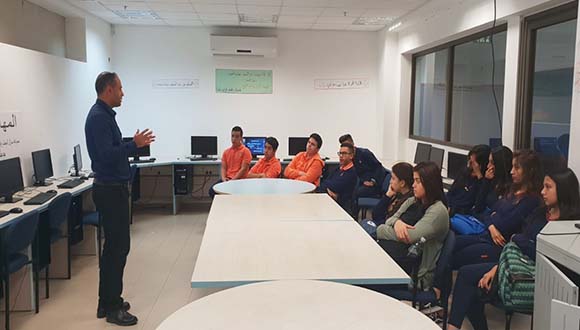
Shady Othmany in dialogue with a group of university candidates
Prof. Mark Shtaif, TAU Rector notes that: “Along with academic excellence, Tel Aviv University sees great importance in making higher education accessible to various sectors of the population, with particular emphasis on the Arab society. A few years ago, we set an ambitious goal for ourselves: to increase the proportion of Arab students in our high-tech studies to reflect the proportion of Arabs in the Israeli population. I am pleased to see that in Electrical Engineering we managed to reach our goal even sooner than expected, and hope the positive trend that we are witnessing in Computer Science will continue as well, until we attain our goal.”
Featured image: Shady Othmany, Marketing Coordinator for the Arab Society, with Arab students at the Tel Aviv University campus
An Underwater Journey Following the Vanishing of Sponge Species from the Shallow Water of the Israeli Coast
The researchers believe that the sharp rise in water temperatures may lead to the death and disappearance.
Researchers from Tel Aviv University embarked on an underwater journey to solve a mystery: Why did sponges of the Agelas oroides species, which used to be common in the shallow waters along the Mediterranean coast of Israel, disappear? Today, this species can be found in Israel mainly in deep sponge grounds – rich habitats that exist at a depth of 100 meters. The researchers assess that the main reason for the disappearance of the sponges was the rise in seawater temperatures during the summer months, which in the past 60 years have risen by about three degrees.
The study was led by Prof. Micha Ilan and PhD student Tal Idan, in collaboration with Dr. Liron Goren and Dr. Sigal Shefer, all from the School of Zoology at the George S. Wise Faculty of Life Sciences and the Steinhardt Museum of Natural History. The article was published in the journal Frontiers in Marine Biology.
Tal Idan explains: “Sponges are marine animals of great importance to the ecosystem, and also to humans. They feed by filtering particles or obtain substances dissolved in the seawater and making them available to other animals, and are used as a habitat for many other organisms. Also, the sponges contain a wide variety of natural materials – chemicals that are used as a basis for the development of medicines. In our study, we focused on the Agelas oroides species – a common Mediterranean sponge that grew throughout the Mediterranean Sea, from a depth of less than a meter to 150 meters deep, but which has not been observed in Israel’s shallow waters for over 50 years.”
During the study, the researchers used a research vessel and an underwater robot belonging to the NGO “EcoOcean,” and with their help located particularly rich rocky habitats on the seabed at a depth of about 100 meters, approximately 16 kilometers west of Israeli shores. The most dominant animals in these habitats are sponges, which is why the habitats are called “sponge gardens.” The researchers collected 20 specimens of the Agelas oroides sponge, 14 of which were transferred to shallow waters at a depth of 10 meters, at a site where the sponge was commonly found in the 1960s. The remaining six specimens were returned to the sponge gardens from which they were taken, and used as a control group.
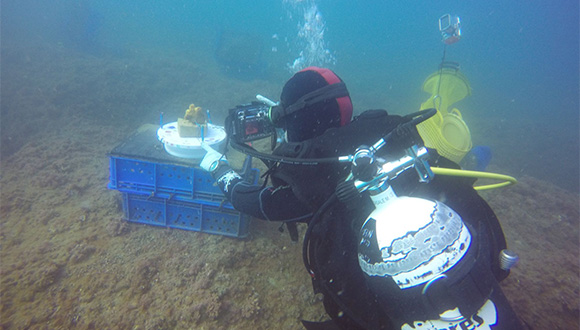
underwater robot. Photo: Tal Idan
The findings of the study showed that when the water temperature ranged from 18 to 26 degrees (in the months of March to May), the sponges grew and flourished: they pumped and filtered water, the action by which they feed, and their volume increased. However, as the water temperature continued to rise, the sponges’ condition deteriorated. At a temperature of 28 degrees, most of them stopped pumping water, and during the month of July, when the water temperature exceeded 29 degrees, within a short period of time all of the sponges that had been transferred to the shallow water died. At the same time, the sponges in the control group continued to enjoy a relatively stable and low temperature (between 17 and 20 degrees) which allowed them to continue to grow and thrive.
Thus, the researchers hypothesize that the decisive factor that led to the disappearance of the sponges from the shallow area was prolonged exposure to high seawater temperature. According to them, “In the past, the temperature would also reach 28.5 degrees in the summer, but only for a short period of about two weeks – so the sponges, even if damaged, managed to recover. Today, seawater temperatures rise above 29 degrees for three months, which likely causes multi-system damage in sponges, which leaves them no chance of recovering and surviving.”
Prof. Ilan: “From 1960 until today, the water temperature on the Israeli Mediterranean coast has risen by three degrees, which may greatly affect marine organisms, including sponges. Our great concern is that the changes taking place on our shores are a harbinger of what may take place in the future throughout the Mediterranean. Our findings suggest that continued climate change and the warming of seawater could fatally harm sponges and marine life in general.”
The researchers add that in recent years, in collaboration with the Ministry of Energy and the Israel Nature and Parks Authority, they have been conducting extensive surveys in a number of sponge gardens along the coast, with the clear aim of protecting these unique habitats and changing their status so that they are recognized as particularly vulnerable. Three of the research sites have now been made part of the Nature and Parks Authority’s Marine Nature Reserves Program, in the hopes that they will eventually receive official recognition as marine nature reserves.
Featured image: Tal Idan

